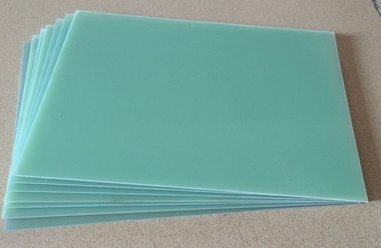- 06
- Nov
Which accessories are used with epoxy glass fiber cloth board?
Which accessories are used with epoxy glass fiber cloth board?
The reliability and service life of the winding operation depend to a large extent on the performance of the insulating material. The basic requirements for the performance of insulating materials include electrical performance, heat resistance and mechanical properties. This article Ms. refers to a brief introduction to the electrical performance of insulating materials. The electrical properties of insulating materials include breakdown strength, insulation resistivity, permittivity and dielectric loss. Divide the breakdown voltage by the thickness of the insulating material at the breakdown point, expressed in kilovolts/mm. The breakdown of insulating materials can be roughly divided into three forms: electrical breakdown, thermal breakdown and discharge breakdown. The electrical performance requirements of the motor for the insulating material are the most important for the breakdown electric field strength and the insulation resistance.

Depending on the type of motor, other electrical performance requirements are not exactly the same. For example, the insulation of high-voltage motors requires low dielectric loss of the insulating material and good corona resistance; and the electric field distribution between the iron core and the conductor must be considered. The intensity of the electric field increases. The loss tangent also increases. When the voltage increases to a certain value, the bubbles inside the medium or the edge of the electrode will be partially freed, and the loss tangent suddenly increases significantly. This voltage value is called the initial free voltage. In engineering, the initial free voltage measurement is often used to check the air gap inside the insulation structure to control the insulation quality. In addition, some insulating materials should also consider electrical properties such as corona resistance, arc resistance, and resistance to leakage traces.
The dielectric loss of the insulating material. The insulating material produces energy loss due to electric leakage and polarization under the action of an electric field. Generally, loss power or loss tangent is used to express the size of dielectric loss. Under the action of DC voltage, instantaneous charging current, absorption current and leakage current will pass. When an AC voltage is applied, the instantaneous charging current is a reactive current (capacitive current); the leakage current is in phase with the voltage and is an active current; the absorption current has both a reactive current component and an active current component. The main factors affecting the dielectric loss of insulating materials. Since there are different dielectric losses at different frequencies, a certain frequency must be selected when measuring the loss tangent value. Generally, the materials used in the motor are generally measured for the dielectric loss tangent at the power frequency.
Under the action of voltage, the insulating material will always have a small leakage current through it. Part of this current flows through the inside of the material; part of it flows through the surface of the material. Therefore, the insulation resistivity can be divided into volume resistivity and surface resistivity. The volume resistivity characterizes the internal electrical conductivity of the material, and the unit is ohm·meter; the surface resistivity characterizes the electrical conductivity of the surface of the material, and the unit is ohm. The volume resistivity of the insulating material is usually in the range of 107 to 1019 m·m. The resistivity of insulating materials is generally related to the following factors. Most of the impurities in the insulating material produce conductive ions, which can promote the dissociation of polar molecules, causing the resistivity to drop rapidly. As the temperature rises, the resistivity decreases exponentially.
